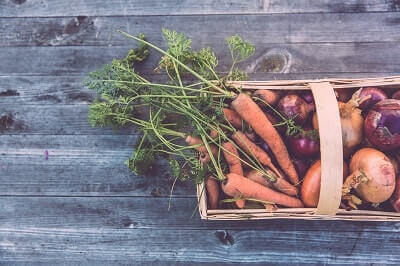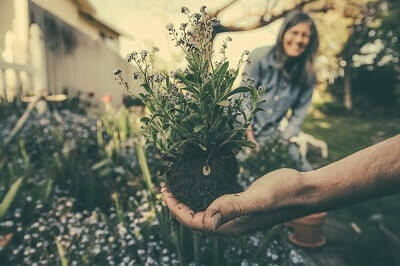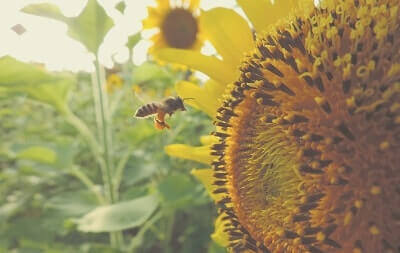Tips That Will Make Your Spring Garden Flourish
“A wizard must have passed this way
Since—was it only yesterday?
Then all was bare, and now, behold,
A hundred cups of living gold!”
—Emma C. Dowd, “Daffodil and Crocus,” _Country Life in America: A Magazine for the Home-maker, the Vacation-seeker, the Gardener, the Farmer, the Nature-teacher, the Naturalis_t, April 1902
Spring has sprung so it’s time to start thinking about your spring garden. (Also cleaning out corners… But if you want cleaning advice, I suggest you read my piece about natural cleaning solutions. And a happy spring cleaning to you!) If you’re a novice gardener, you may appreciate my piece here more than a seasoned pro. Even if you’re a seasoned pro, read along; I might just say something you haven’t thought of before (or failing that, I could, at the very least, amuse you).
Here’s How Your Spring Garden Will Thrive
Base Your Planting on Geographic Location

First of all, it’s important to know what grows in the area that you live in and what doesn’t. In a way, it’s a little frustrating for me to write this because I have no idea if you’re reading this in Arizona or Indiana or Maryland. So, keeping that in mind, take a look at your neighbor’s gardens (if you have neighbors who have gardens), or talk to people in local garden centers as to what grows best where you are. Don’t worry about approaching them; most people who work in garden centers are green thumbs who love to dispense advice.
The Facts about Organic Fertilizers and Soil pH

Once you have an idea about what you want to plant, it’s time to prepare the earth. It’s important to create healthy soil that has sufficient nutrients in it because that’s the best way to nurture your plants and vegetables. The optimal way to do that is by using organic natural fertilizers. Now, there are bags and bags of organic fertilizers available in shops, and they are almost always priced exorbitantly. Don’t fall for it. You can use easily available natural fertilizers, and often they’re available from your own garden (like grass clippings!). For a complete breakdown on the different kinds of natural fertilizers you can use, check out the information here.
When you fertilize, don’t forget to adjust your garden’s soil pH. Most plants thrive in soils that are between 6 pH (slightly acidic) to 7.5 (alkaline). Soil pH is important because it affects the availability of nutrients in the soil. Check out this oldie but goodie to learn all about soil pH and how you should go about adjusting your own.
Establish an Irrigation System
The next step is to plan an irrigation system for your garden. I’m sorry to be the one to tell you, but wandering around with the hose on for 20 minutes a day isn’t quite going to cut it. But! The good news is, once you take the time to set up an irrigation system in the beginning, it can just keep going for eternity. For easy step-by-step instructions that even I can’t muck up, go here.
Plant Both Flowers and Veggies

Now we get to the fun part; planting things! You can go ahead and plant your favorite flowers in your garden if you want to—here’s a handy guide that tells you what flowers to plant and where—but please don’t forget to also plant vegetables. More and more people are growing their own vegetables now, which not only makes them self-sufficient, but it also has a huge impact on global warming. Remember that most vegetables we buy in shops all have huge carbon footprints on them. Many of them travel halfway around the world to end up on your dinner table, and that sort of thing just isn’t viable for the earth anymore. Besides, if you grow your own, you can even swap veg with your friends and neighbors. There are many community programs that help people do just that. Everybody wins! And remember, grow what your family likes to eat, and swap or donate the rest. It really is that simple! If you want to know more about how to grow food, I cannot recommend this book enough.
Seeds or Seedlings?
Another thing to keep in mind… It may be more economical to grow your produce from seeds, but it’s quicker to buy seedlings. Don’t forget to harden your seedlings gradually before planting them in your spring garden. Here’s how.
What to Do about Those Pesky Pests
Finally, there are pests who will make your gardens their homes, and help themselves to seedlings and produce. Some are more destructive than others, so I would recommend finding out about local pests (your local garden center’s employees will be more than happy to advise you in this regard) and taking preventative measures to safeguard your garden. Some measures might involve actual physical barriers between your plants and your pesky garden visitors. Other measures may include getting a little more creative. But please keep in mind that there are multiple humane ways to get rid of garden pests, so use the resources in the linked sites and accumulate some good karma while you’re at it!
Happy gardening! I hope your thumbs turn green and your plants flourish in your spring garden!
Awanthi Vardaraj lives and writes in the port city of Chennai, in the south of India, where she runs her own small artisanal bakery and keeps a garden full of jasmine plants and herbs that she still cannot name. As a freelance writer, she mostly focuses on food, feminism, travel, mental health, and poverty. She also nurtures a deep love for the Oxford comma and the semicolon. Visit her website at www.awanthi.com and follow her on Twitter at AwanthiVardaraj.
Let us know below or on Facebook and Twitter what you’ll be planting in your spring garden.
